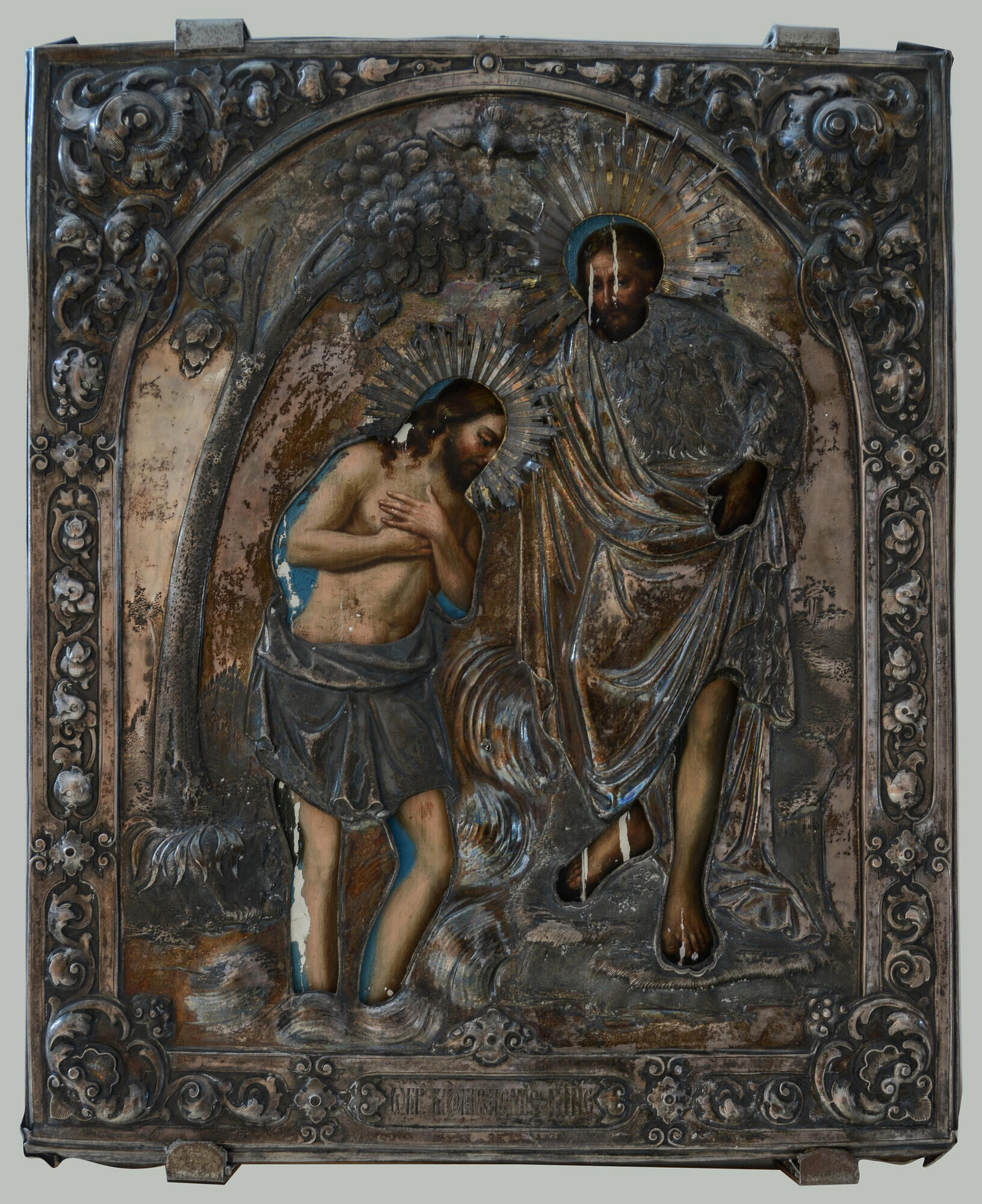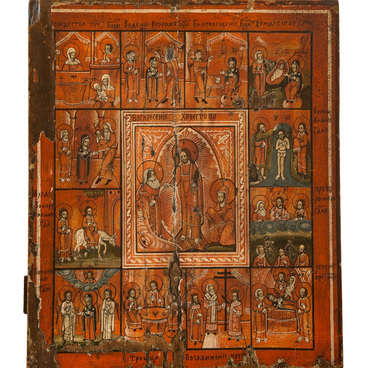The Greeks sent to Rus various church utensils, including sacred objects: books, crosses, relics, and icons, often decorated with metal revetments. Russian craftsmen made their own products based on these samples.
A revetment usually covers the main part of the icon’s surface, leaving only the faces, hands and feet uncovered by robes visible through the slots. Revetments can be attached to different icons in different ways, depending on the original goals of the master or masters and owners of the images.
Most often icons are painted over the entire surface of the wooden board as independent finished works. But it happens that over time, the owner, as a sign of reverence or in gratitude for help from above, decorates the image with a revetment. In this case, a metal overlay covers the entire image (that is, everything except the faces, hands and feet), and the viewer cannot see the original painted image. On the other hand, this is how a new work is born, a complex piece that unites two artifacts, in which details, for the most part, are depicted on the metal revetment.
In addition, some icons were initially painted with the revetment in mind (called podokladnitsy). They featured only the faces, hands and feet, while other details that would be covered by the revetment were simply outlined with wide strokes or absent altogether. Such an icon is a cohesive piece created by two masters — an icon painter and a metalworker.
The presented artifact is an example of such masterpieces: the faces, hands and legs of Jesus Christ and John the Baptist, as well as Christ’s entire torso, are painted on the board itself in a picturesque manner. God the Son stands in the Jordan River, bowing before John.
The three-dimensional relief silver of the
“Epiphany” revetment depicts the Holy Spirit in the form of a dove at the top
of the scene, as well as the robes of Christ and John the Baptist, the Jordan,
and the tree in riverine thickets. Halos are presented in the form of radiant
corollas. The fields are formed by floral décor, especially lush in the
corners. On the lower silver field is an inscription “The Icon of the
Epiphany”. The beholder can notice how carefully the leaves of the décor are
rendered; the veins are visible on each leaf. To give the trunk of the tree a
matte surface, the master covered it with a plethora of small embossed dots.
The fibers of the fabric of John’s cilice (a hair shirt) are beautifully
sculpted.


